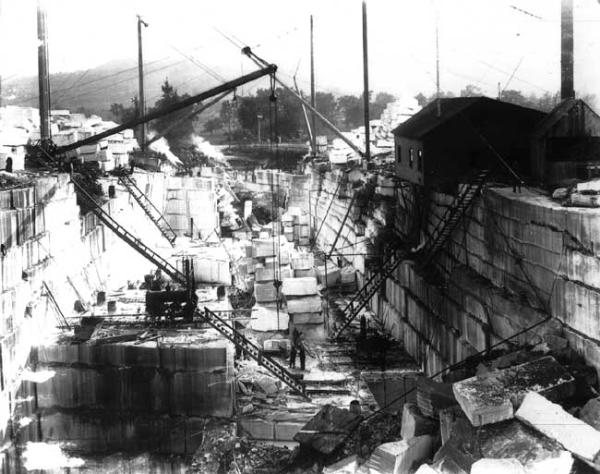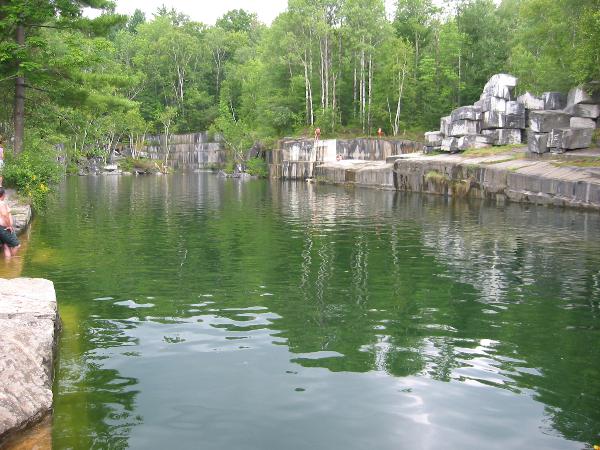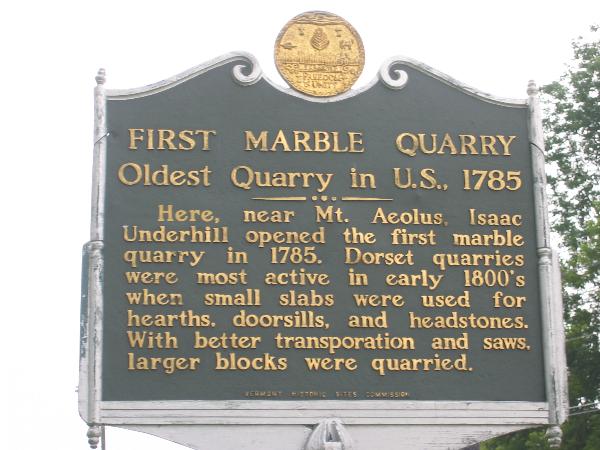A lovely Location for
everyone to enjoy , bring your swimming gear and take a dip!
Below is some history about the location!
Six miles north of busy Manchester, nestled in
a high valley made of marble, lies historic Dorset. Marble
quarries at the edge of town are said to be the oldest in the nation. Once a
major part of Dorset's economy, they are now a haven for swimmers. Marble from these
quarries provided stone for the New York City Library and the
town's sidewalks and churches.

Original
Pictures from 1785
Two elements combined to make Dorset quite
different from the other grants along what are now Route 7A and
Route 30. Strangely both are geographical and one is geological.
A rise of mountains between these two routes turned Dorset into a
split town with the villages of Dorset and South Dorset along
Route 30 and North and East Dorset on Route 7A. Morse Hill Road
from South Dorset to East Dorset is the only direct ink between
them in the town - a distance of 3.6 miles. Lying buried in this
range of peaks, Mt. Aeolus, Owls Head, Netop and Dorset Mountain,
was the geological phenomenon that became Dorset's claim to fame
throughout the country - marble.
The country's first commercial marble quarry
was opened in South Dorset by Isaac Underhill in 1785 on the land
of Reuben Bloomer. Over Dorset's marble industry lifetime of some
130 years, two dozen or more quarries located on the slopes of
Dorset Mountain and Mt. Aeolus provided marble for headstones,
lintels, hearths and the like in the early years, followed by
monumental uses and later building stone used in many notable
buildings, such as the New York Public Library, the library of
Brown University, and Memorial Continental Hall of the Daughters
of the American Revolution in Washington, D.C. Several mansions
on New York City's 5th Avenue were built of Dorset marble, and
many bank buildings across the land were graced by interiors
lined with polished Dorset marble, some of which was attractively
streaked or tinted with green or bluish colors. After the
clapboard church in Dorset Village burned in 1907 a new church
was built in the same style using locally quarried marble.
One quarry is known as the Gettysburg because
from its tunnel-like cut were taken marble blocks fashioned into
5000 or more gravestones for the cemetery on the Civil War
battleground of that name. At the formidable Freedley tunnel
quarry, located 1000 feet above the East Dorset valley, an
inclined railway was built to transport the large marble blocks
(typically 4x4x8 feet in size) to the mill located in the valley
below, replacing the slow and laborious trip down the mountain in
ox-drawn wagons and sleds.


Pictures from August 2004
 Kid Friendly
Kid Friendly  Lunchtime Cache
Lunchtime Cache  Cache In - Trash Out!
Cache In - Trash Out!  Dogs Allowed
Dogs Allowed
 Available year-round
Available year-round  Wading
Wading
 Swimming Nearby
Swimming Nearby
 Accessible in Winter
Accessible in Winter  Scenic View
Scenic View  Beware of Muggles
Beware of Muggles  Historic Site
Historic Site


Click To Rate This Cache